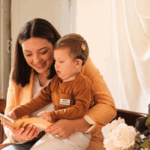MED-EL
Published Jan 02, 2019
How a Cochlear Implant Helped My Tinnitus and Hyperacusis

Imagine you’re just sitting at home, and you suddenly realize you can’t hear. That was the reality for 52-year-old Mercedes Garcia. Her sudden hearing loss changed her life overnight, and she struggled with single-sided deafness, hyperacusis, and tinnitus every day for over a year. That’s when she decided to get a cochlear implant.
Now with her cochlear implant, Mercedes’ life has improved dramatically. Her hearing is much better than before, she is no longer kept awake by tinnitus, and she has even returned to playing the piano! We asked Mercedes to tell us about her hearing journey, and the struggles and surprises of sudden hearing loss.
My name is Mercedes and I am 52 years old. I was born in Jaén, in Spain, although I have lived in Seville for 26 years.
I am a specialist in radiodiagnosis and I love my profession. Outside of work, my main hobbies are traveling, reading, and music—I studied music as a child and returned to playing the piano a few years ago.
Sudden Hearing Loss
On March 4, 2016, I suffered sudden hearing loss in my left ear. I was at home and suddenly I noticed a “pop”—like a change of pressure in the ear—plus vertigo with dizziness, and a loud whistle. The vertigo went away with medication, but not the sensation of having a blocked ear, or the tinnitus.
It was the weekend and I just happened to be alone. I did not know what was happening to me. I did not know about the existence of sudden hearing loss. On Monday at 8 o’clock in the morning, totally overwhelmed by the situation, I went to the ENT clinic at my hospital.
They told me I had sudden hearing loss in my left ear. I couldn’t hear anything at all! It was at that moment that I began to be aware of what was happening to me and realized that I probably would never be able to hear in that ear ever again.
Life With Single-Sided Deafness
It was very difficult to accept my new situation. I developed hyperacusis, which meant that everyday sounds were suddenly very uncomfortable to listen to: speech, traffic, computer typing, electronic devices… they had all become unbearable.
By losing hearing on one side, I was no longer able to locate sounds, and my brain was unable to ignore all the “useless” background sounds that surround you. So in noisy environments, hyperacusis together with tinnitus prevented me from understanding a normal conversation, despite having a healthy ear.
The tinnitus was really disabling, a continuous beep that appeared when I opened my eyes in the morning and that increased during the day until it became unbearable and prevented me from falling asleep at night. At that moment you think, will it ever be silent again? It really is something exasperating.
Different Hearing Aids
In spite of treatment, after six months I couldn’t really hear any better than I could at the start. I had regained minimal hearing in the low frequencies, and nothing in high frequencies. I tried a hearing aid, I tried a CROS system, and I tried a BAHA, but none of them helped me. My hearing had barely improved, and the hyperacusis and tinnitus were still incapacitating.
My life had changed completely. I started avoiding family meals and social gatherings, and I stopped listening to music because the tinnitus distorted it completely. Fortunately my work environment is relatively quiet, but even so, it was very difficult for me to concentrate. I have always suffered from migraines, and the number of occurrences increased alarmingly.
After I had been struggling with hearing loss for a year, my audiologist posed the possibility of cochlear implantation.
Making the Decision
Until that moment I had been totally ignorant about cochlear implants—I had always considered it the last option. The surgery and general anesthesia made me nervous, and I knew that having an electronic device in my head also had a number of long-term repercussions.
I was very concerned about combining two types of hearing: the natural hearing in my healthy ear with the electrical hearing in my implanted ear. Do you hear everything weirdly, or differently? What about the tinnitus? And the hyperacusis? Will my understanding increase in noisy environments? Will I be able to locate the sounds again?
I decided to give myself a period of three months to make a decision.
I read many scientific papers about cochlear implants and single-sided deafness. I gathered all the information I could. Using a CI to treat single-sided deafness seemed quite new. Although there wasn’t a huge amount of scientific evidence and the sample sizes were small, the initial results were encouraging. I consulted several specialists with experience in single-sided deafness and CIs and finally decided that a cochlear implant was the right choice.
Choosing a Cochlear Implant
I checked the technical profiles of the different cochlear implant manufacturers. I was looking for a sound quality as natural as possible that would allow me to not only understand speech, but also to enjoy music again. With MED-EL, it seemed that the quality of the sound and the music perception was better as the Triformance technology covered all the sound frequencies. The possibility to preserve residual hearing and the compatibility of the implant with future audio processors were also important reasons for me.
But as a professional radiologist, compatibility with MRI was a determining factor in the decision. MRI nowadays is a fundamental diagnostic technique in daily medical practice, and in many cases is irreplaceable by other alternative techniques such as ultrasound or CT. So the fact that MED-EL’s SYNCHRONY implant was compatible with MRIs of up to 3.0 Tesla was the icing on the cake.
Activation Day
I had spoken with professionals and patients, I had seen many videos, and I had read a lot about the activation, but really I did not know what I was facing. That day I was nervous, expectant. The audiologist verified that all the electrodes were working correctly. In principle everything was fine. And then I heard. For the first time in two years, I began to hear in my left ear. My first thought was: is this really what I want to hear? The sound was metallic, unintelligible, and I was unable to distinguish bass or treble voices. I could only distinguish the sounds—I understood absolutely nothing.
Despite all the information out there, everyone creates their own expectations. I thought that by having a healthy ear and by being implanted not long after I had lost my hearing, the process was going to be easier. I was wrong. The rehabilitation process is long and takes a lot of work. Your speech therapist plays a fundamental role but the support and help of family is essential.
From what I have experienced, I would say that learning to hear with a cochlear implant is like learning a language. The first time you listen to a new language you recognize some individual words, then you place yourself in the context and slowly you understand the conversation. This process requires continuous effort and attention, which is exhausting. In the future I hope to master this new language, and not be continuously translating, but be able to listen, understand and think in “cochlear implant language.”
Life With a Cochlear Implant
Today, ten months after activation, I am happy with my decision to get a cochlear implant. My hyperacusis, although it has not completely disappeared, has drastically improved and the tinnitus has become almost unnoticeable when I have my audio processor on. Paradoxical though it may be, I can finally enjoy silence again! My hearing is still not as good as it was before I suffered sudden hearing loss, but the implant has allowed me to understand speech better.
With my cochlear implant, I can also enjoy music with both ears, and I play the piano again. Although listening to music with the CI was disappointing at the beginning because I only heard noise, I have persevered and can now recognize the melodies. For this I have used various online apps that allow you to read the score while listening to a piece of music. And the Artone Max neckloop allows me to connect by Bluetooth so that I can practice listening with just my implanted ear, without having to block my healthy ear.
Using RONDO 2
I started out with SONNET, but recently I also got a RONDO 2 audio processor. From my point of view, the greatest benefit of RONDO 2 is the comfort. You barely notice that you are wearing it, and it is very comfortable to have your ear free, especially if you wear glasses. Although the aesthetic factor has not been decisive for me in any way, I notice that people do not realize I am wearing a device—it goes completely unnoticed, hidden by my hair. It is also very convenient to charge it wirelessly and forget about the batteries. In terms of sound quality, I think it is very similar to SONNET. I adapted immediately and have hardly noticed any difference.
My Advice
Are cochlear implants a good solution for single-sided deafness? It depends fundamentally on the person, and the cause of the hearing loss and accompanying symptoms. Each case should be viewed individually by the specialist. My life changed drastically as a result of single-sided deafness, and the cochlear implant is allowing me to reverse that, at least in part. You are not aware of the importance of hearing with both ears until you lose one, and even more so if you lost your hearing suddenly like I did.
To be successful with a cochlear implant, you must have patience and enthusiasm. The path is long and it requires effort, but the result is clearly worthwhile. Finally, I would like to take this chance to show my appreciation to all the professionals who have helped me on this journey and to whom I am extremely grateful. And also to my family, because without their help and unconditional support, none of this would have been possible.
Thanks, Mercedes!
Find out how cochlear implants can help with tinnitus.
Have you heard about SONNET 2? Discover how our latest cochlear implant audio processor is made for you.
Read all about the benefits of a cochlear implant for single-sided deafness.
MED-EL
Was this article helpful?
Thanks for your feedback.
Sign up for newsletter below for more.
Thanks for your feedback.
Please leave your message below.
Thanks for your message. We will reply as soon as possible.
Send us a message
Field is required
John Doe
Field is required
name@mail.com
Field is required
What do you think?
© MED-EL Medical Electronics. All rights reserved. The content on this website is for general informational purposes only and should not be taken as medical advice. Contact your doctor or hearing specialist to learn what type of hearing solution suits your specific needs. Not all products, features, or indications are approved in all countries.
MED-EL


